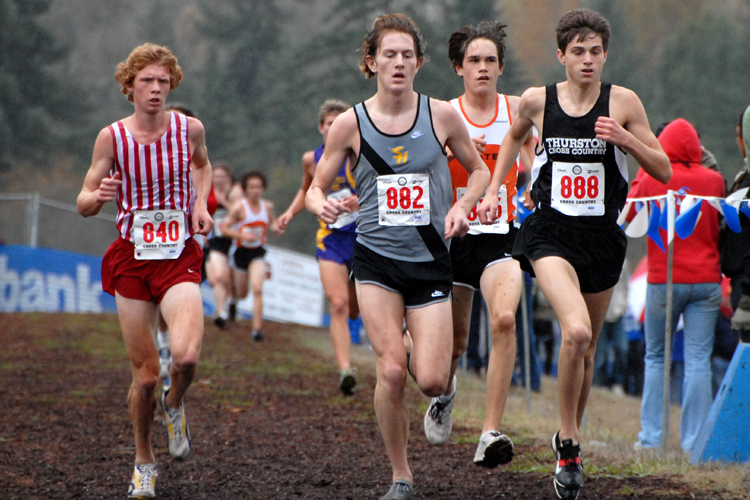Track is on a flat, marked oval, emphasizing speed. Cross-country is off-road, with varied terrain and longer distances, testing endurance and stamina.
TL;DR Track Racing Vs. Cross-Country racing
Track racing is a fast-paced sport that takes place on an oval-shaped track, where athletes compete in various events such as sprints, hurdles, jumps, and throws. It requires explosive speed and precision to excel in these events. Track races are typically shorter distances but demand intense bursts of energy.
Cross-country racing involves running on natural terrain like grassy fields or forest trails. It tests an athlete’s endurance and ability to navigate different terrains while maintaining a steady pace over longer distances. Cross-country races can be mentally challenging as runners face unpredictable weather conditions and varying terrains.
What is track racing?

Track racing involves competitive athletic events held on a designated oval track. It includes various sprints, middle-distance, and long-distance races, as well as hurdles, relays, and sometimes field events.
Athletes compete in assigned lanes, aiming for the fastest time or farthest distance, with specific rules and regulations governing each event.
Track racing is a cornerstone of athletics and showcases athletes’ speed, agility, and endurance, making it a popular and integral component of both amateur and professional sports competitions worldwide.
What is Cross-Country Racing?

Cross-country racing is an off-road running competition conducted over natural terrain such as trails, grass, and varying landscapes.
Athletes navigate a marked course, often encountering hills, mud, and uneven surfaces. Distances can range from 5 kilometers to longer distances. Cross-country emphasizes endurance, stamina, and strategic pacing.
Runners must adapt to different terrains, making it a challenging and exhilarating form of competitive running. The sport is popular at both recreational and professional levels, requiring athletes to excel in diverse environmental conditions and showcasing their ability to handle the challenges posed by off-road courses.
Track Racing Vs. Cross-Country racing – Key differences
| Criteria | Track Racing | Cross-Country Racing |
|---|---|---|
| Venue | Flat, marked oval track | Off-road trails, grass, varying terrain |
| Surface Type | Smooth, synthetic or natural track surface | Natural terrain, often uneven and varied |
| Event Types | Sprints, middle-distance, long-distance, hurdles, relays | Primarily long-distance races |
| Distance Range | Short sprints to longer distances on the track | Typically longer distances (5K and above) |
| Emphasis | Speed and explosive bursts | Endurance, stamina, and strategic pacing |
| Environmental Challenges | Minimal external factors | Adapting to varied terrains and conditions |
| Field Events | May include field events like jumps and throws | Primarily focused on running events |
| Lane Assignments | Athletes run in assigned lanes on the track | No assigned lanes; free movement on course |
| Team Dynamics | Team scores based on individual performances | Team scores often based on collective team placement |
| Event Specifics | Precision in running lanes, relay exchanges | Navigating diverse and challenging terrains |
| Popular Distances | Range from short sprints to longer distance races | Primarily longer distances (e.g., 5K, 10K) |
| Competitive Season | Often held on tracks within athletic stadiums | Takes place in various outdoor settings |
| Strategy | Focus on quick starts, pacing, and finish-line tactics | Strategic pacing, adapting to course challenges |
| Equipment | Track spikes for speed and traction | Cross-country spikes for varied terrains |
Track Racing Vs. Cross-Country racing – Mental Aspects and Strategies for Success
Track Racing
Mental Toughness: Requires the ability to handle pressure in quick bursts, execute precise tactics, and stay focused on short, intense efforts.
Strategic Pacing: Involves specific strategies tailored to the track, like planning for negative splits and timing sprint finishes accurately.
Environmental Factors: Relatively controlled environment with fewer external factors, allowing for a more predictable mental preparation.
Team Dynamics: While primarily an individual sport, team tactics come into play in events like relays, emphasizing coordination and communication.
Cross-Country Racing
Mental Toughness: Demands sustained mental toughness, as athletes navigate challenging terrains and endure longer distances, requiring resilience and focus over extended periods.
Strategic Pacing: Requires strategic pacing due to varied terrains, hills, and unpredictable conditions, necessitating adaptability and careful energy management.
Environmental Factors: Involves adapting to diverse environmental challenges, including mud, hills, and changing weather conditions, testing mental adaptability.
Team Dynamics: Team strategies become crucial, and collective efforts impact team scores, fostering a sense of camaraderie and shared achievement.
Image Credits
Featured Image By – Dean Lofgren from Pixabay
Image 1 By – Pexels from Pixabay
Image 2 By – ChunkySoup, CC BY-SA 3.0, via Wikimedia Commons








